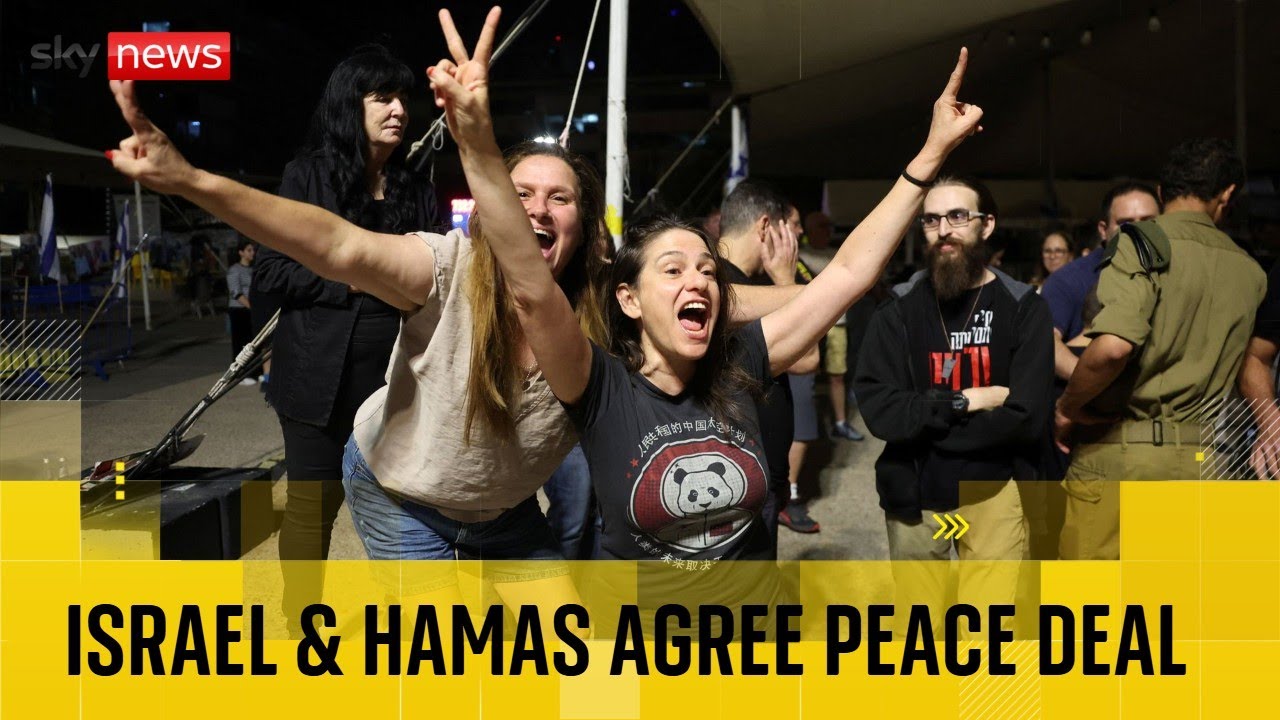Israel & Hamas Sign First Phase of Gaza Peace Plan, Says Trump
In a significant development that could signal a turning point in the long-standing Israeli-Palestinian conflict, former U.S. President Donald Trump announced that Israel and Hamas have officially signed the first phase of a comprehensive Gaza peace plan. This diplomatic breakthrough has generated cautious optimism among international observers, who have long sought a pathway toward stability and peace in the region.
In a press statement, Trump declared, “Today marks a historic milestone. Israel and Hamas have come together to sign the first phase of a peace plan for Gaza. This agreement represents a critical step toward ending hostilities, alleviating humanitarian suffering, and laying the groundwork for future negotiations.” The former president emphasized that while this is only the initial phase, it holds the promise of progressing toward a broader, more durable peace in the coming months and years.
Details of the Agreement
According to Trump, the first phase involves a series of confidence-building measures designed to reduce violence and build trust between the conflicting parties. Key components include a ceasefire—ceasing rocket attacks from Gaza on Israeli territory and halting Israeli military operations—and a commitment from Hamas to refrain from provocative actions.
Additionally, the agreement outlines commitments from the international community to provide humanitarian aid and financial assistance aimed at rebuilding Gaza’s infrastructure and improving living conditions. This includes easing some border restrictions and facilitating the entry of essential goods and aid workers. The goal is to support economic recovery and stability, which experts see as essential for long-term peace.
Reactions and Expectations
The announcement has sparked a mix of reactions across the political spectrum. In Israel, officials have expressed a cautious stance, emphasizing the importance of verifying Hamas’s commitment and monitoring compliance with the agreement. Some Israeli leaders remain skeptical, citing past broken ceasefires and false promises.
Hamas representatives in Gaza have issued statements acknowledging the signing but stressing that sustained progress depends on concrete actions and continued negotiations. They reiterated their desire for a permanent ceasefire and economic improvements, emphasizing that their commitment to peace is contingent on Israel’s compliance with the terms.
International reactions have been somewhat mixed but generally optimistic. The United Nations and several European countries called for patience and urged all parties to respect the agreement, emphasizing that sustainable peace requires ongoing dialogue, trust, and cooperation.
Historical Context
The Israeli-Palestinian conflict, particularly the clashes between Israel and Hamas, has persisted for decades, marked by cycles of violence, failed peace initiatives, and ongoing disputes over territory, sovereignty, and security. Many previous attempts at peace have faltered due to mutual distrust and unresolved core issues.
This recent announcement of a phased agreement represents a potential shift toward pragmatic diplomacy. If successful, the initial steps could pave the way for broader negotiations on long-term issues such as borders, refugees, and the status of Jerusalem.
Looking Forward
While the signing of the first phase of the Gaza plan is a promising development, experts warn that the path to lasting peace remains challenging. Implementing the agreement, ensuring compliance, and building trust between Israel and Hamas will require sustained effort from all parties, as well as continued support from the international community.
Nevertheless, many see this progress as a hopeful sign—an opportunity to break the cycle of conflict and bring some measure of stability to Gaza and the wider region. As Trump highlighted, “This is just the beginning. With diplomatic resolve and good faith, peace in Gaza is within reach.”

